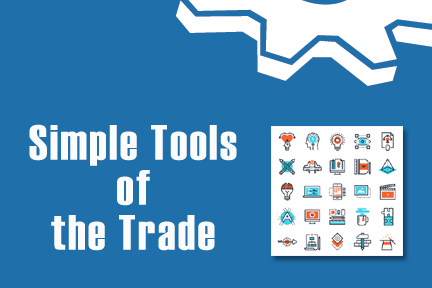
Emma was excited! “Guess what I did this morning?” she said. I looked up from my work as she placed a stack of tax papers and other documents on my desk for me to sign.
Still focused on my on-screen project, and not really pumped about dealing with tax things, I responded, “I haven’t a clue what you did!”
“I did color calibrations on the new digital press!” Emma said proudly.
“Wow, who showed you how to do that?” I was puzzled. You see, Emma’s not really a technical person, and I felt sure we weren’t shorthanded out in production. So, why was someone training color calibrations to our print company’s bookkeeper?
As I submitted to putting my “John Hancock” on all her tax papers, Emma cheerfully told me what had happened.
Simple Tools to Test New Procedures
My son Paul, who was setting up our new digital press cost center, had written a step-by-step procedure for doing the color calibrations. Paul wanted to test his new procedure on Emma, and she was proud to say she had passed the test. Whenever she had come to a step that stumped her, Paul would take it back, make some modifications, then hand it back to her to continue.
Emma said Paul had written it “so well,” she only had to stop a few times. She thought that was “pretty neat.” I was just really proud that my son has learned the art of writing time-and-money-saving procedures!
I’ m sure you’ve purchased a widget or two in your time, and become frustrated trying to decipher the directions it came with. How do you use the darn thing?
The Art of Writing Good Procedures
I’ve learned that the best way to write good procedures, is to make it simple enough so anyone can understand it. When people understand the how-to of a task, they will complete it in a shorter amount of time. There are lots of people making lots of money writing manuals that, frankly, make no sense at all!
Paul, however, did exactly what we instruct our software clients to do when writing procedures:
FIRST, write the procedure keeping in mind others’ ability to read and understand it. Then pick someone who knows little or nothing about the task you want them to complete, and have them follow the procedure one step at a time.
NEXT, observe how they use, read and respond to the step-by-step prompts on the procedure. As soon as you notice them stopping or stumbling in any way, don’t just tell them how to proceed. Take the procedure back to the drawing board, and rewrite the step or PROMPT with more clarity. Repeat that process until you are certain they can complete the task without supervision.
If you can get someone with no knowledge of a task to understand your written procedures, you can be confident that a person who has experience with the task or machine will definitely understand the procedure. Wouldn’t it be great to write even a long, complicated procedure SO WELL, that a 10-year-old could understand it?
Working ON your Business with Simple Tools
Writing a procedure is an act of “working ON your business and not IN your business,” by creating systems that empower people to do their work confidently, without interrupting you or others in your company. In fact, if you give them direct access to necessary Standard Operating Procedures (SOP’s), you could be away from your business without getting those pesky calls or emails on your cell phone asking you umpteen questions.
Many times, owners and managers assume people should know or remember how to do something after being shown only once. But, SIMPLE TOOLS OF THE TRADE—like well-conceived systems/procedures—can pretty much guarantee a job will be done right.
Yes, it’s time-consuming to write a good procedure! But, remember—you only have to write it ONCE! Think of how many times you’ve been interrupted to show someone how to do one thing or another, over and over. Add up all that interruption time, and then multiply that by hundreds of tasks needing to be done every single day at your company. That’s a lot of time and money saved, that could go straight to your bottom line; and procedures serve as great training tools.
So, the next time (maybe it happened today?) someone stops you as you walk through the office or plant—to ask Who, What, When, Where or How (one more time)—it’s quite possible you have NOT provided them with the SIMPLE TOOL to answer these questions for themselves. A simple, very inexpensive procedure.
Did I mention? Great systems work!